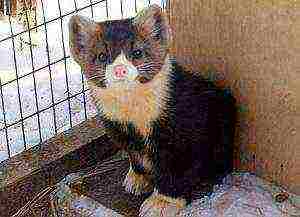Content
- 1 Catfish
- 2 Manufacturers
- 3 Reproduction under control
- 4 Spawning
- 5 Fertilization
- 6 De-gluing
- 7 Incubation
- 8 Keeping the larvae
- 9 Stages of growing larvae
- 10 Growing
- 11 Which breeding method should you choose?
- 12 Catfish keeping conditions
- 13 Equipment for breeding and keeping Clarius catfish
- 14 Economic aspect and potential profit
- 15 Basic costs
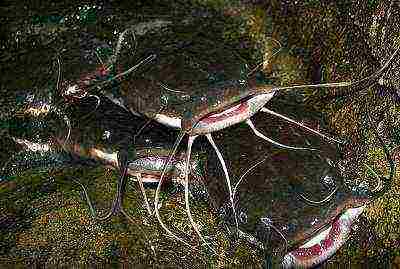
- History of the African catfish
- About business
- How much money is needed to open a farm for growing African catfish
- Technology for growing catfish in a reservoir
- A step-by-step plan to discover where to start
- How much can you earn
- What OKVED to indicate when registering a business
- What documents are needed to open
- What taxation system to choose for business registration
- Do I need permission to open
- Growing technology
Recently, the cultivation of African catfish has attracted more and more interest from Russian farmers. There are reasons for this. Firstly, African catfish easily adapt to the conditions of basin cultivation, which is very important for the climate of Russia. Secondly, catfish are very easy to breed, disease resistant and reared at high stocking densities. Third, there are simple and beneficial feeding programs for African catfish. These facts make the catfish growing business quite profitable and profitable.
History of the African catfish
African catfish is tasty, unpretentious fish and grows fast enough. The biology of catfish is such that they can live without water for two days, breathing ordinary air. The point is that they have both gills and lungs. This is a very strong and intelligent fish. In their homeland, in Africa, catfish can walk up to 1 km "on foot" - when the water leaves the flooded rivers. From pits with water, where they fall, catfish can jump up to 2 meters in height and crawl to look for water.
Catfish can cope with water temperatures ranging from 8 to 35 degrees Celsius. But for reproduction, a temperature of more than 18 degrees is needed, and for feeding, more than 20 degrees.
The first catfish farms appeared in Holland in 1980. Since 1985 until 1986 over 60 farms appeared in Holland, which produced about 300 tons of fish. In 1992, the production of African catfish already totaled over 1235 tons, moreover, 71.3% of this number, i.e. 880 tons, produced in Holland on 8 large farms. In Russia, one of the currently known catfish farms is LLC "Aquatoria", located in the city of Orel (up to 100 tons of marketable fish). There are also a number of other small farms that grow mainly small volumes of marketable catfish (no more than 50 tons per year).
About business
For growing catfish, any heated room with an area of 50m2 or more is suitable. For example, German farmer Peter Waller (a farm in the Leningrad region) grows African catfish in a former vegetable store. The fish is raised in special pools - closed water supply installations (see also - “sturgeon rearing in RAS“).
How much money is needed to open a farm for growing African catfish
Investments for opening a catfish farm with a volume of 10 tons of marketable fish per year can range from 2 to 5 million rubles. The main costs are the creation of conditions for fish farming: the acquisition of swimming pools, the creation of a closed water supply system, a water filtration system, and engineering communications. And this is provided that the premises for the farm are rented, and not built from scratch. Otherwise, the costs may amount to more than 10 million rubles.
Equipment for a farm that produces 10 tons of African catfish per year may include:
- eight pools of 1.5 m3 each;
- two sedimentation tanks 1.2 m3 each;
- well reservoir with a volume of 2 m3;
- biofilter and 12 m3 of filter bags;
- a stove that dissolves water;
- 1 kW pump;
- pipes, fittings;
- 55 W UV lamp;
- feed dispenser type "Reflex" - 8 pieces.
Characteristics of the recirculation system for the production of 10 tons of African catfish per year:
- minimum building area - 60 m2;
- pool area - 10 m2;
- pool volume - 10 m3;
- water volume in the system - 15 m3;
- change of water in pools with fish - 1 time per hour;
- process water consumption - up to 300 m3 per day;
- permanent removal of impurities - sedimentation;
- biological filtration, biological filter volume - 11 m3;
- biological filter area - 150 m2 / m3;
- installed capacity - 1 kW;
- adding clean water (feeding) per day - 100 l / 1 kg of feed.
Technology for growing catfish in a reservoir
African catfish fry can be purchased at a price of 1100 to 1500 rubles for 5000 pieces. But bringing juveniles to maturity is not an easy task. According to Peter Waller, the most difficult period for fry, which weigh no more than 10 grams, the mortality at this weight is the highest. After 10 grams, a very small percentage of fish die. Malek, in fact, is the main problem of the economy.
Catfish grow quickly. The growth period of the larva to marketable fish is only 6 months. Catfish are omnivores and are eaten by almost everyone. In their homeland, in Africa, catfish eat both fruit and antelope meat, which remains after the "crocodile supper". In Russia, they are fed with compound feed, but you can also give wheat, corn, bran.
“When a fish eats actively, it means that it is healthy and in a good mood,” laughs Rimma Nikolaevna, Peter Waller's business partner. And the mood of African fish changes from magnetic storms, and from the wind outside, and from the state of the water. By the way, the task of water purification is one of the main conditions for the success of the economy. And the recirculating water system - the installation of a closed water supply - copes with this task best of all. Each aquarium with fish alternates with containers with bacteria that are not visible, for that benefit - as from an expensive purification system. Microorganisms clean the pools of food residues, fish waste products, and therefore the water remains perfectly clean.
According to businessmen, expensive feed and water heating costs account for almost 30% of the cost of fish. These are the only downsides to raising African catfish.
The average wholesale price for African catfish is 150 rubles per kilogram. At first, problems may arise with the sale of fish. To begin with, you can conclude contracts with small wholesale resellers, deliver fish to markets, restaurants, cafes and retail stores. The ideal client is retail chains, which are not so easy to get into.
In Germany, Holland and France, the consumption of equatorial fish is actively promoted by the state, because catfish is a natural source of fatty amino acids, and for farmers it is a quickly payback business.
Do you want to meet other promising businesses? Find out what is profitable to invest in today? Check out the free course on investing in new buildings. Even if this type of activity is not suitable for you, you will gain a life-saving experience.
Related videos:
A step-by-step plan to discover where to start
The stages of organizing a business for the cultivation and breeding of African catfish are highly dependent on material capabilities. Beginning entrepreneurs should use the extensive or semi-intensive cultivation method, and businessmen with more significant start-up capital should use the intensive one. A business plan for organizing a business is based on the following stages:
- Calculation of estimated costs and annual profit.
- Construction of a small reservoir along with the provision of the required ecosystem.
- Installation of auxiliary equipment: filters, lighting systems, etc.
- Obtaining the required permissions.
- Purchase of feed and fry of African catfish.
- Setting up work with the supplier.
Don't forget about advertising.A good advertising campaign is extremely important for promoting a business, first of all, you can use the Internet and social media. In filling your group with content
How much can you earn
Before assessing the real profit from the African catfish breeding business, the main expenditure items should be calculated: building a pond 50-100 thousand rubles, purchasing fry 150 rubles / kg and feed up to 25 thousand per month. It will be necessary to install heating, filtration, lighting and ventilation systems, in the amount of about 300 thousand rubles. For effective work, overalls and fishing equipment will be required - up to 60 thousand. In total, the costs can be up to half a million rubles or more. By selling fish at a wholesale price of up to 100 rubles / kg, as well as receiving additional income from eggs of broodstock, the payback of the project can be 1 year or more.
What OKVED to indicate when registering a business
When registering, you must specify OKVED 2.03. Fishing and fish farming.
What documents are needed to open
To register a business, it is necessary to create an individual entrepreneur or LLC. In this case, a standard set of documents will be required: a passport, forIa statement of state registration, a receipt for payment of the state duty, as well as a copy of the TIN certificate.
What taxation system to choose for business registration
It is recommended to choose a single imputed tax on business income.
Do I need permission to open
To open a business, permits from local governments and the State Committee for Water Resources will be required. It is also recommended to carry out an environmental impact assessment and obtain permission from the employees of the sanitary and epidemiological station.
Growing technology
The technology of growing African catfish depends on the chosen method. Extensive requires a small start-up investment for the construction and improvement of the site. The fish in this case feeds on natural food, various types of plankton. The intensive method requires pools with a recirculated water supply. At the same time, favorable conditions are created for the fish: temperature, diet, cleaning of containers, etc. Catfish can be raised with other fish species to act as an orderly, but it should also be remembered that he is a predator. The optimal conditions for catfish are the same as for carp: the presence of 10 ml / g of oxygen and 10-30 mg / l of carbon dioxide.
(
estimates, average:
out of 5)
Loading…
Related business ideas:
Surely everyone has seen marble catfish in grocery stores on fish counters. And very many people like this type of fish, because its meat is quite juicy, soft and tasty. But not everyone knows that it is quite easy to grow this fish on your own or on a small fish farm. In this article, we will consider the rules for breeding and growing fish in a subsidiary farm, but you can grow catfish for personal consumption in the same way.
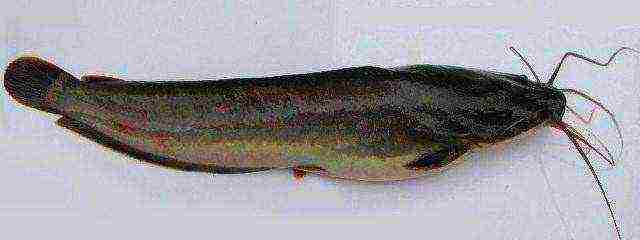
Catfish
In general, "marble catfish" is not quite the correct name for this fish. In fact, its name is African Clarias gariepinus. These fish are native to Africa. Even in the waters of the Sahara, you can catch the Nile Clarias. It looks like a completely ordinary catfish: its long body in brown spots has a light abdomen. A distinctive feature of all catfish is a long mustache. Clarius has 4 pairs of mustaches. This type of fish is able to process oxygen from the air using the supragillary respiratory organ. For this purpose, the catfish emerges to the surface and is saturated with air. It is this feature that made the Clarius so easy to breed. There is no need to provide it with fresh water. Moreover, one cubic meter of water can plant about 300 kilograms of live fish. Of course, this is only possible if the faeces are removed regularly.

To keep a large number of fish, you must either purchase special pools, or have access to large enough reservoirs.One of the features of the method is the possibility of further application of warm water from incubators, which leads to better results.
Manufacturers
For the most part, the parent stock is fish that grow faster than others. African catfish can participate in reproduction by 1.5 - 2 years. The female reaches sexual maturity by 6 months, but the best results are obtained at 2 years of age.
Usually, during breeding, the parent stock is kept in separate tanks, the water in which is heated to 23-25 degrees Celsius. Producers' feed must be carefully balanced. The protein content in such feed should be at least 38%. Producers must consume at least 1.5% of their weight per day.
The optimal number of breeders in one fish receptacle is 100 individuals.
Reproduction under control
Most often, to obtain high quality sex products, manufacturers are stimulated by injections of hormones. Before starting the hormone administration, the females must be distributed to different aquariums or pools.
2-3 days before the spawning procedure, you need to put the fish on a starvation diet. With a single injection, the pituitary gland is used, at the rate of 4.5 mg per kilogram of the live weight of the fish.
African catfish, which it was decided to breed with the help of injections, also responds well to Ovopel. It is administered once, using 1 pellet per kilogram of fish. This drug is used as a physiological mixture. Males are kept in the same reservoir until spawning.
Spawning
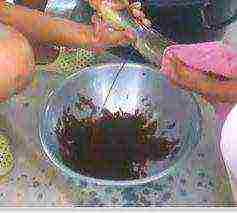
For successful maturation of eggs, it is necessary to keep females in water with a temperature of about 26 degrees until spawning. Full ovulation occurs 12 hours after the injection of the pituitary gland.
African catfish is a rather nervous fish, therefore, to obtain eggs, females must be euthanized. This is done by injecting an anesthetic drug. The most commonly used "Propiscin".
Eggs are obtained from each female separately. In this case, it is considered acceptable if the mass of caviar is at least 20% of the weight of a particular individual. After the procedure, the female is placed in a KMnO4 solution for about an hour. The drug must be diluted at the rate of 0.5 g per 100 liters of water.
Milk is mostly taken from the gonads of already caught males. The efficiency of spermatozoa lasts up to 24 hours at one temperature - 4 degrees.
Fertilization
The resulting caviar is divided into three parts. It is better not to mix caviar from different females. Each serving should weigh approximately 300 grams. Then take 3 ml of milk. The efficiency will be higher if the milk comes from different males - this stimulates the fertilization process. Thus, it is better to take 1 ml from 3 males. Dip the milk and caviar in water and mix well for about five minutes.
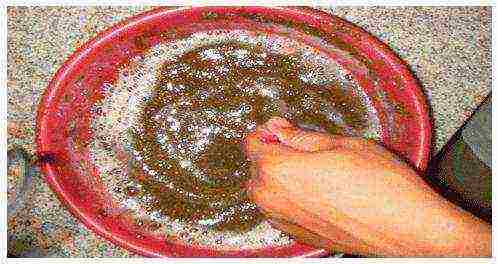
De-gluing
After fertilization has been carried out, the eggs must be washed well. For this, a tannin solution is used. It takes about 10 grams per 10 liters of water. To completely de-glue the caviar, it is necessary to thoroughly rinse it in a solution for no more than 30 seconds.
Incubation
After the caviar is de-glued, its incubation begins in trays on frames or in special devices. The incubation frames should be sheathed with a mesh of about 0.5 mm. The eggs are spread on a grid in a layer of 1 egg. At a water temperature of no higher than 27 degrees, larvae appear. It takes about 25 hours from the moment of fertilization to the appearance of the larva. Water in the trays is consumed at a rate of 10 liters per minute.
Keeping the larvae
The larvae must be kept in trays or small pools until the yolk sacs are absorbed. You can put the larva in the pool for the first two days, then move it to the trays.

African Clary Catfish larva should be kept in the dark. Three days after the final resorption of the yolk sac, it is necessary to remove the moldy film from the bottom of the tray. If the larvae become active, then the yolk sac is completely dissolved.
Stages of growing larvae
The first stage lasts about 3 weeks.Its end occurs when the African catfish begins to breathe oxygen from the atmosphere.
Planting larvae during this period is equal to about 100 pieces per liter of water. The water must be constantly saturated with oxygen, and its exchange must be established in the pool. You need to feed the larvae with decapsulated brine shrimp or tubule. A week later, starter feeds are introduced into the diet. Lighting should be dim or dim.
The larvae are cannibalistic, therefore, by the end of the first stage, the content of fry will naturally decrease to 25-50 pieces per liter of water. Sorting future fish need to be in the third week. Such interference can anger the larvae, so sorting must be done very carefully. After that, the fish is left in the antibiotic solution for an hour.
The second stage lasts about 5 weeks. This cycle usually begins with the filling of the pool with well-sorted larvae. Their number should be approx. 300-500 mg. The larvae should be sorted into 2 pieces by size.
Most often, the African catfish fry is planted taking into account the specific weight of the fish and the volume of the basin. The daily ration, divided into 3 meals, should be approximately 5% of the weight of the fish.
The next stage is about two months. Fish during this period should weigh 130-200 grams. The growth rate of fry depends on the stocking density. For a pool with a volume of 5 thousand liters, the stocking density is 2.5 pieces per liter. The water temperature is within 27 degrees.
During the third stage, the main food for the African catfish is floating. The feeding process is automated or manual. The water must be changed after 2 hours.
Growing
It takes about 50 days to grow African catfish to marketable form from the date of completion of the third stage of larval rearing. The average weight of fish by the end of the whole process can be up to 2 kilograms. During this stage, African catfish is in pools with a capacity of about 10 cubic centimeters. You can plant no more than 3 fish for two liters of water. This method yields approximately 400 kilograms of live fish for every cube of water.
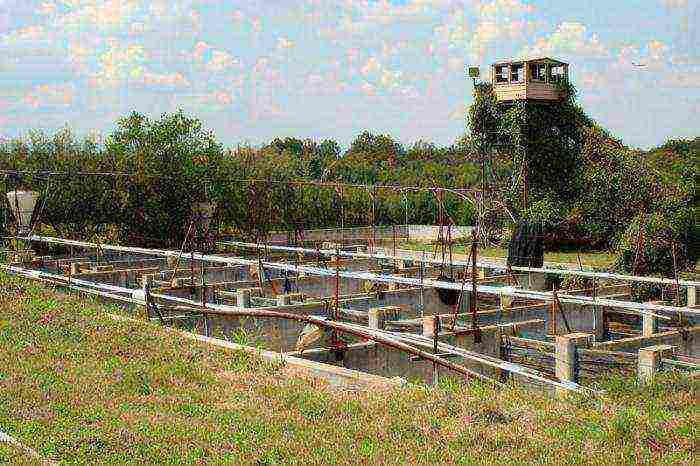
Most often, fish are fed at this stage with floating feed. The food volume is about 3% of the weight of the fish. It is necessary to feed her about 5 times a day.
Excellent results can be obtained when using Reflex feeders. One feeder of this type is used for 10 squares of pool area.
Hand feeding ensures a more even distribution of food. This leads to a differentiation of the fish mass. African catfish, which are bred in a controlled manner, show significant gains in a fairly short period of time.
After completing all stages, the fish are sorted. Individuals that have shown the best rates of weight gain and growth are left for further reproduction, the rest of the fish is sent for sale. Pools and trays after fish rearing are washed and cleaned until the next generation. Before new use, treat with an antiseptic solution.

Given the rather high average water temperature, it is possible to breed African catfish only in the south of Russia. Currently, catfish are being bred in the Temryuk district of the Krasnodar Territory.
What are the physiological and lifestyle features of catfish?
First of all, it should be decided that by the name "catfish" we mean the species Ordinary catfish (aka European). In addition to it, there is also the American channel catfish, African clary catfish and others (in total there are about 100 species of the Catfish family).
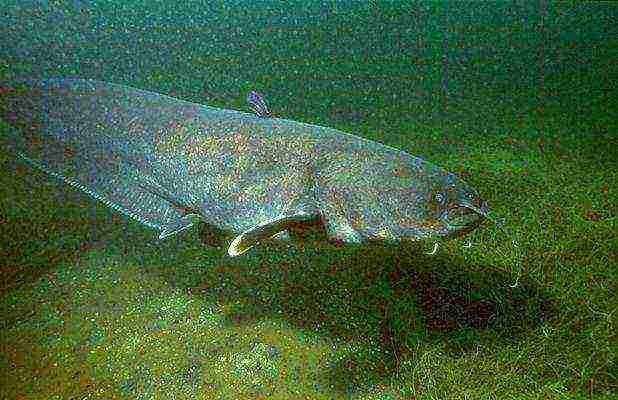
European catfish - a large predatory fish, quite widespread. Has no scales. Loves warm fresh water. An adult catfish can feed on fish, frogs, rodents and even a bird, and in the absence of live prey, it eats carrion.
The average life span of a catfish is about 50 years, while its size can reach five meters, and its weight is 300-400 kg. Catfish reaches sexual maturity by 4-5 years.Catfish meat is white, has a delicious rich taste.
The benefits of the catfish lifestyle include that it does not require large bodies of water. This saves space for commercial catfish farming. For the winter, the catfish hibernates and does not hunt, this allows it to be sent to wintering ponds together with other types of fish.
How is catfish breeding and growing?
There are several ways to grow catfish:
1) Cage method.
The fish are kept in cages, while the juveniles and the feeding freight train are kept separately.
2) Pond method.
Natural method of keeping. Juveniles are hatched under hatchery conditions or in special spawning nursery zones.
3) Basin method.
Allows you to grow catfish at home. The size and type of pools may vary.
4) Feeding method.
With this type of keeping, it is possible to breed catfish both in monoculture and in combination with other fish species. You can use the catfish as a natural “orderly” to prevent the unnecessary increase in the population of other fish. If this is not required, the size of other fish should be comparable to the size of the catfish so that it cannot attack them.
How to feed catfish?
Catfish feeding depends on the age of the fish and the physiological state. When growing catfish in ponds, underyearlings are fed with all kinds of aquatic invertebrates. To improve the nutritional base in ponds, there should be underwater areas abundantly overgrown with soft plant mass - it is necessary for the development of herbivorous chironomids, which constitute the main diet of catfish fry.
When kept in an artificial reservoir at different stages of catfish rearing, feed can be very different.
1) Larvae several days old feed on various large zooplankton, by two weeks they need to feed small chironomids (mosquito larvae). Well suited for feeding the larvae of brine shrimp nauplii (small crustaceans), as well as starting compound feed in the form of a paste. The larvae should receive food 10-12 times per day.
2) When the larvae gain about 100 mg in weight, the amount of live zooplankton in the diet can be reduced by up to 20-25%. Starting from this moment and in the next 40-50 days, the main feed becomes a starter feed with the addition of a grated spleen.
3) The next stage begins from the moment the larvae reach a mass of 1 gram, and until the weight increases to 5 grams. For these purposes, a compound feed intended for trout fingerlings is suitable, with the addition of grated spleen, premixes (the ratio of dry and pasty feed should be 1 to 1). The number of feedings per day is 6-10 times, the dosage of feed is 10% of the live weight of the fish (per day).
4) The next stage starts with the larva gaining a weight of 5 grams, and ends when it reaches 15-20 grams (usually it takes from one to one and a half months). The ration is used the same as for feeding the fish in the previous stage, but the frequency of feeding is reduced to 3-4 times a day, and the amount of feed is reduced to 6% of the live weight of the fish per day.
5) In winter, an adult fish (hibernating) does not need food, but the young of the year must be fed. The amount of food depends on the temperature of the water - the higher it is, the more food is required:
- + 7-8 ° С - 0.5-1% of live weight.
- + 9-11 ° C - 1-2% of live weight.
- + 12-13 ° C - 3% of live weight.
The composition of the feed can be taken the same that was used in the summer. Alternatively, it is allowed to use frozen and fresh fish twisted into minced meat with the addition of 1% trout premix.
With the autumn-winter cage content, the weight of underyearlings increases by an average of 15-20%.

6) Adult catfish, starting from two years old, are fed 2 times a day. The standard diet is mixed feed for trout and pasty admixtures. The daily dose should not be less than 4-5% of the live weight of the fish.
7) Before spawning, sexually mature females are recommended to be fed with the following composition: mixed feed for trout (in granules), minced fish or a mixture of minced meat with spleen (1 to 4) 40-50% plus trout premix - 1%. When kept in a pond, you can feed producers with live fish (about 30% of the diet).
It is supposed to feed twice a day - in the morning and throughout the day.
How is catfish spawning and growing?
In the conditions of a fish pond, spawning begins no earlier than the water temperature reaches + 18-20 ° C. The spawning area should be overgrown with grass, water should preferably be stagnant or slightly flowing. Before spawning, females and males should be separated in advance, otherwise they can injure each other.
The female catfish arranges for herself a kind of "nest" - crumples the grass. The eggs are laid in several passes, rather densely (per 1 kg of live weight, the female gives out about 10-20 thousand eggs, depending on age), after which the male and the female are on duty nearby for a day, protecting the eggs from possible enemies. After that, the female swims away, and the male catfish watches the eggs until the larvae hatch.
For spawning, you can use artificial nests, which are located near the shores of the reservoir.
How are catfish farms arranged?
Commercial catfish farms start with capacities of 50 tons of fish per year. Interestingly, one person is enough to maintain such a farm with a workload of about 25 hours per working week. Mostly African catfish are bred on such farms. There are both smaller farms (from 20 tons per year) and very large ones - from 100 tons per year and more.
The production cycle begins with the placement of fry weighing from 0.1 to 5 grams. Catfish farm technology allows you to increase the weight of catfish from 1 gram to 1 kilogram in just 6 months of keeping. Since the entire population of fish grows unevenly, the “harvest” is taken every week, with a total weight of about a ton. To do this, fish are sorted into four different groups, by weight, first of all, catching the largest.
Consumption of compound feed for growing catfish on a farm is less than 1 kg per kilogram of live weight of fish.
The catfish farm is being created on the basis of a recirculating water system - a closed water supply installation. Raising catfish in RAS does not differ much from raising other fish species.
The system is ground-based, the used water circulates through filters, is purified (not only mechanically, but also biologically) and again enters the pools. The advantages of such a system are in saving water resources, in the absence of environmental pollution, in automatic strict control of the safety of the chemical, biological and physical properties of the water used, but it is more financially costly than keeping catfish in fish ponds.
You may be interested in reading about breeding.
carp
or
crucian carp
.
And a little about secrets ...
Have you ever experienced unbearable joint pain? And you know firsthand what it is:
- inability to move easily and comfortably;
- discomfort when going up and down stairs;
- unpleasant crunching, clicking not on their own;
- pain during or after exercise;
- joint inflammation and swelling;
- unreasonable and sometimes unbearable aching pain in the joints ...
Now answer the question: does this suit you? How can such pain be tolerated? And how much money have you already "poured" on ineffective treatment? That's right - it's time to end it! Do you agree? That is why we decided to publish an exclusive interview with Professor Dikul, in which he revealed the secrets of getting rid of joint pain, arthritis and arthrosis.
Read the interview ...
You can also watch an interesting video about catfish breeding
The cost of catfish on the market is slightly lower than other types of fish, so they are often used for making canned fish.And since there is demand, it means that breeding catfish at home can be an excellent and profitable business.
There are several technologies for breeding and growing fish, and it depends only on you and your initial capital which one to choose.
Which breeding method should you choose?
The extensive method is the minimum investment in the construction and arrangement of the pond. The fish will eat naturally occurring foods found in the water. The cage method is the cultivation of fish in special suburbs, which are installed in a natural reservoir. The entrepreneur will need to spend money on the purchase of feed and these structures.
Experts assure that the intensive method is most suitable for raising catfish, when the fish needs to create the most favorable conditions for growing. In the reservoir, the optimal temperature for gaining mass with catfish is set, the process of feeding food is automated, and so on.
The businessman can use the catfish as a kind of orderly for the reservoir when it is raised along with other types of fish. But it should be remembered that catfish is a predatory fish, therefore, when selecting fish for combined breeding, you need to carefully select the size of carp or trout. Then the catfish will not be able to eat them, because it easily eats smaller fish.
Catfish keeping conditions
Breeding catfish in a pond on a personal plot is a profitable business if you choose the right type of catfish. Clarium (marble) catfish is best suited for this. It will be necessary to create favorable conditions for it: sufficient oxygen content in the water, salt level and pH. This fish is very fond of twilight, so it is advisable to place the pond in a shaded place.
At home, keeping catfish in a pond is only necessary in the warm season. The fry are released into the reservoir when the water temperature reaches 15C, 25C is considered the most optimal temperature for fish growth. For a reservoir capacity of about 2000 liters, about 60 fry will be needed.
African catfish should be fed at least 3 times a day with ready-made feed and compound feed. In addition, the clary catfish feeds on plant foods, so chicken offal, earthworm and various insects can act as top dressing. In general, the amount of feed required is calculated based on the age and weight of the fish.
The female and male at the age of 2 years are considered sexually mature and can be used for breeding. Breeding catfish as a business will be profitable only if you provide the fish with an indoor reservoir for wintering. Otherwise, the growth of the catfish slows down, and the young may die altogether, thereby bringing continuous losses.
Keeping catfish in a closed installation also has a number of nuances, so you will definitely need to purchase additional equipment: a pump for air supply and a device for maintaining a stable temperature in the pond.
We advise you to read: How to open a foreign language school?
Equipment for breeding and keeping Clarius catfish
A pond, indoor facility, aquariums or barrels are suitable for starting a fish farming business. The main thing is the temperature regime and dim light in the room. Each of the chosen method of growing catfish will require certain investments. It will definitely be boring to buy such equipment:
- A couple of sedimentation tanks of about 1.5 square meters.
- Biofilters.
- Pumps with a minimum power of 1 kW.
- Fittings and pipes for water.
- Feeders.
We advise the article: How to open a sports store from scratch?
Economic aspect and potential profit
As for the possible costs of creating a pond and raising fish, everything here will depend on the chosen farming technology. It is necessary to approach its selection wisely and, among other things, take into account the size of the initial capital that can be spent on the arrangement of reservoirs.
All costs can be conditionally divided into several large groups:
- Regarding the heating of water in swimming pools.There can be several heating methods: using equipment in the pool itself or warm air inside the building.
- The costs of operating the farm, cleaning and cleaning up reservoirs.
- Spending on the purchase of feed and planting material.
You can produce about 2,000 kilograms of products if you spend 300 thousand rubles (the amount does not include the arrangement of swimming pools, since you can use different reservoirs and different equipment for this purpose). The price of a kilogram of catfish on the market today is such that the business will begin to pay off already in the second year of fish farming.
For a year, fish can be grown to a weight of 2 kilograms with the right three meals a day. As a result, about 400 kilograms of fish are obtained per cube of water. Depending on the chosen method of growing fry, the result may also be different.
In any case, a novice businessman can choose an extensive method for himself, when the catfish will eat only natural food and the costs / investments will be minimal.
Useful article: How do I open a dry cleaner?
Basic costs
It is imperative to draw up such a business plan in advance, which will help to soberly assess the risks and your capital. It includes the following items:
- The purchase of fry is about 10 thousand rubles.
- The salary of workers is 30 thousand (at the initial stage, you can do it on your own).
- Other expenses - another 30 thousand.
- Fish food - 10 thousand.
As a result, at least 80 thousand rubles will be needed to maintain a small pond without additional equipment. With such a business, the gross profit can reach 100 thousand rubles, which is very good considering the investments.
The grown fish in the reservoir must be sorted regularly. Individuals that have the best rates of weight gain can be left for further reproduction. Send the rest of the fish for sale, and then prepare a pool or pond for new generations.
In general, there should be no difficulties with breeding Clarius catfish. But since catfish is very demanding on the average water temperature, if you want to gradually expand your business, you will need to purchase equipment for heating water. Otherwise, the rate of its growth decreases, as does the entrepreneur's profit.
